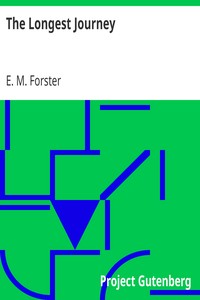| Summary |
"The Longest Journey" by E. M. Forster is a novel written in the early 20th century. The book explores the lives of its central characters, primarily a thoughtful and introspective young man named Rickie Elliot, as he navigates his way through the complexities of relationships, philosophy, and society during his time at Cambridge University. The narrative delves into themes of identity, existential thought, and the contrast between intellectual pursuits and the realities of human emotion. The opening of the novel introduces a lively philosophical debate among Rickie and his friends, centering around the existence of a cow as a metaphor for objectivity versus subjectivity. While the others engage actively in this discussion, Rickie feels overwhelmed and chooses to observe rather than participate. We also meet Agnes Pembroke, a young woman who arrives at Rickie's room unannounced, disrupting the philosophical gathering. The initial interactions hint at the complexities of relationships and the social dynamics among students at Cambridge. The atmosphere is infused with warmth and humor, yet underscored by Rickie's inner struggles with his sense of belonging and understanding of his own identity as he confronts both personal and societal expectations. Through vivid descriptions and character dynamics, the opening sets the stage for a deeper exploration of Rickie's journey toward self-discovery and the challenges he will face along the way. (This is an automatically generated summary.)
|

